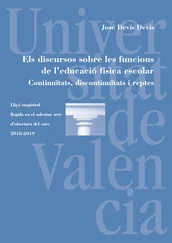Corbetta, M. & Shulman, G. L. (2002). Control of goal-directed and stimulus-driven attention in the brain. Nature Reviews Neuroscience, 3 (3), 201-215.
Currie, J. (2001). Early childhood education programs. Journal of Economic Perspectives, 15 (2), 213-238.
Das, J. P. & Heemsbergen, D. B. (1983). Planning as a factor in the assessment of cognitive processes. Journal of Psychoeducational Assessment, 1 , 1-15.
De Luca, C. R., Wood, S. J., Anderson, V. A., Buchanan, J. A., Proffitt, T. M., Mahony, K. & Pantelis, C. (2003). Normative data from the CANTAB. I: development of executive function over the lifespan. Journal of Clinical and Experimental Neuropsychology, 25 (2), 242-254.
Denckla, M. B. (1996). A theory and model of executive function: a neuropsychological perspective. In G. R. Lyon & N. A. Krasnegor (Eds.), Attention, memory and executive function (pp. 263-278). Baltimore, MD: Paul H. Brookes.
Díaz, A., Martín, R., Jiménez, J. E., García, E., Hernández, S. & Rodríguez, C. (2012). Torre de Hanoi: datos normativos y desarrollo evolutivo de la planificación. European Journal of Education and Psychology, 5 (1), 79-91.
Duncan, G. J., Dowsett, C. J., Claessens, A., Magnuson, K., Huston, A. C. & Klebanov, P. (2007). School readiness and later achievement. Developmental Psychology, 43 (6), 1428-1446. doi:10.1037/0012-1649.43.6.1428
Espy, K. (1997). The shape school: assessing executive function in preschool children. Developmental Neuropsychology, 13 , 495-499.
Ellis-Weismer, S., Tomblin, J. B., Zhang, X., Buckwalter, P., Chynoweth, J. G. & Jones, M. (2000). Nonword repetition performance in school-age children with and without language impairment. Journal of Speech, Language and Hearing Research, 43 , 865-878.
Fantuzzo, J., Bulotsky-Shearer, R., McDermot, P., McWayne, C., Staci, P. & Frye, D. (2007). Investigation of dimensions of social-emotional classroom behavior and school readiness for low-income urban preschool children. School Psychology Review, 36 , 44-62.
Flores-Lázaro, J. C., Castillo-Preciado, R. E. & Jiménez-Miramonte, N. A. (2004). Desarrollo de funciones ejecutivas, de la niñez a la juventud. Anales de Psicología, 30 (2), 463-473.
Friedman, N. P. & Miyake, A. (2004). The relations among inhibition and interference control functions: a latent-variable analysis. Journal of Experimental Psychology, 133 (1), 101-135.
Fuchs, L. S., Compton, D. S., Fuchs, D., Paulsen, K., Bryant, J. D. & Hamlett, C. L. (2005). The prevention, identification and cognitive determinants of math difficulty. Journal of Educational Psychology, 97 , 493-513. doi: 10.1037/0022-0663.97.3.493
Gathercole, S. E., Lamont, E. & Alloway, T. P. (2006). Working memory in the classroom. In S. Pickering (Ed.), Working memory and education (pp. 219-240). London: Elsercer.
Gathercole, S. E., Pickering, S. J., Knight, C. & Stegmann, Z. (2004). Working memory skills and educational attainment: evidence from national curriculum assessments at 7 and 14 years of age. Applied Cognitive Psychology, 18 , 1-16. doi: 10.1002/acp.934
Geary, D. C., Hoard, M. K., Byrd-Craven, J. & DeSoto, M. C. (2004). Strategy choices in simple and complex addition: contributions of working memory and counting knowledge for children with mathematical disability. Journal of Experimental Child Psychology, 88 , 121-151.
Gersten, R., Jordan, N. C. & Flojo, J. R. (2005). Early identification and interventions for students with mathematics difficulties. Journal of Learning Disabilities, 38 , 293-304.
Ghez, C. & Krakauer, J. (2000). The organization of movement. In Kandel, E. R., Schwartz, J. H. & Jessell, T. M. (Eds.), Principles of Neural Science (pp. 656-668), 4 thed. New York: McGraw-Hill.
Goldstein, S. & Naglieri, J. A. (Eds.) (2014). Handbook of Executive Functioning . New York: Springer.
Goldstein, S., Naglieri, J. A., Princiotta, D. & Otero, T. M. (2014). In S. Goldstein & J. A. Naglieri (Eds.), Handbook of Executive Functioning (pp. 3-12). New York: Springer.
González, C., Carranza, J. A., Fuentes, L. J., Galián, M. D. & Estévez, A. F. (2001). Mecanismos atencionales y desarrollo de la autorregulación en la infancia. Anales de Psicología, 17 (2), 275-286.
Handley, S. J., Capon, A., Beveridge, M., Dennis, I. & Evans, J. St. B. T. (2004). Working memory, inhibitory control and the development of children’s reasoning. Thinking and Reasoning, 10 (2), 175-195. doi: 10.1080/13546780442000051
Holmes, J. & Gathercole, S. E. (2013). Taking working memory training from the laboratory into schools. Educational Psychology . doi :10.1080/01443410.2013.797338
Ibáñez, R. & García-Madruga, J. A. (2005). Working memory and intelligence. A developmental study. Infancia y Aprendizaje, 28 (1), 25-38.
Jurado, M. B. & Rosselli, M. (2007). Neuropsychology Review, 17 (3), 213-233. doi:10.1007/ s11065-007-9040-z
Karbach, J. & Kray, J. (2009). How useful is executive control training? Age differences in near and far transfer of task-switching training. Developmental Science, 12 (6), 978-990. doi: 10.1111/j.1467- 7687.2009.00846.x
Klingberg, T., Forssberg, H. & Westerberg, H. (2002). Training of working memory in children with ADHD. Journal Clinical Experimental Neuropsycholy, 24 , 781-791.
Klingberg, T., Fernell, E., Olesen, P. J., Johnson, M., Gustafsson, P., Dahlström, K., Gillberg, C. G., Forssberg, H. & Westerberg, H. (2005). Computerized training of working memory in children with ADHD: a randomized, controlled trial. Journal of the American Academy of Child & Adolescent Psychiatry, 44 , 177-186.
Leon-Carrión, J., García-Orza, J. & Pérez-Santamaría, F. J. (2004). The development of the inhibitory component of the executive functions in children and adolescents. International Journal of Neuroscience, 114 (10), 1291-1311.
Lezak, M. D., Howieson, D. B. & Loring, D. W. (2004). Neuropsychological assessment (4 thed.). New York: Oxford University Press.
Liew, J., McTigue, E., Barrois, L. & Hughes, J. (2008). Adaptive and effortful control and academic self-efficacy beliefs on achievement: a longitudinal study of 1 stthrough 3 rdgraders. Early Childhood Research Quarterly, 23 , 515-526. doi:10.1016/j.ecresq.2008.07.003
Luria, A. R. (1966). Human brain and psychological processes. New York: Harper & Row Publishers.
McClelland, M. M. & Cameron, C. (2012). Self-regulation in early childhood: improving conceptual clarity and developing ecologically-valid measures. Child Development Perspectives, 6 (2), 136-142. doi:10.1111=j.1750-8606.2011.00191.x
McClelland, M. M., Cameron, C. E., Wanless, S. B. & Murray, A. (2007). Executive function, behavioral selfregulation and social-emotional competence: links to school readiness. In O. N. Saracho & B. Spodek (Eds.), Contemporary perspectives on social learning in early childhood education (pp. 83-107). Charlotte, NC: Information Age.
Mesulam, M. M. (2002). The human frontal lobes: transcending the default mode through contingent encoding. In D. T. Stuss & R. T. Knight (Eds.), Principles of Frontal Lobe Function (pp. 8-30). New York: Oxford University Press.
Millner, A. J., Jaroszewski, A. C., Chamarthi, H. & Pizzagalli, D. A. (2012). Behavioral and electrophysiological correlates of training-induced cognitive control improvements. Neuroimage, 63 (2), 742-753. doi: 10.1016/j.neuroimage.2012.07.032
Miyake, A. & Friedman, N. P. (2012). The nature and organization of individual differences in executive functions: four general conclusions. Current Directions in Psychological Science, 21 (1), 8-14.
Читать дальше












